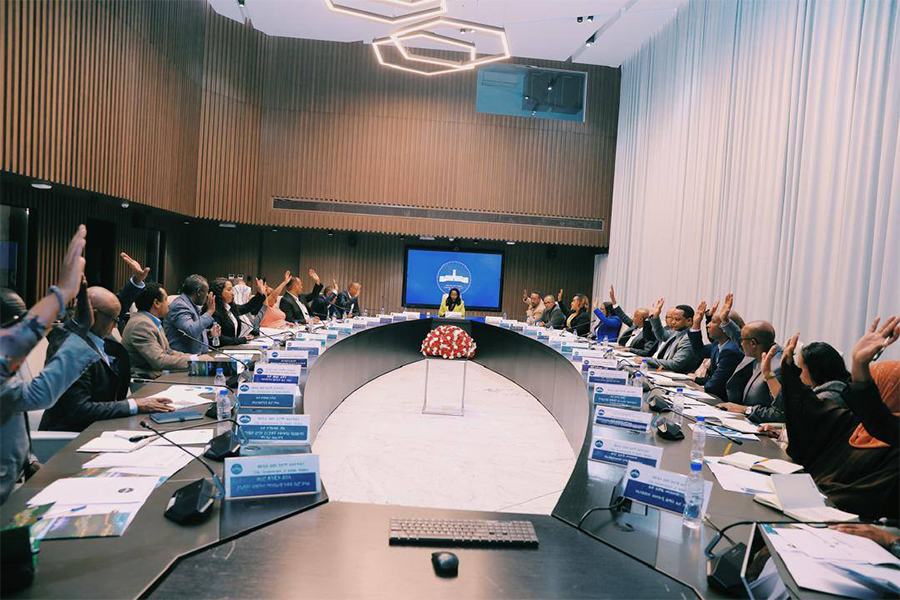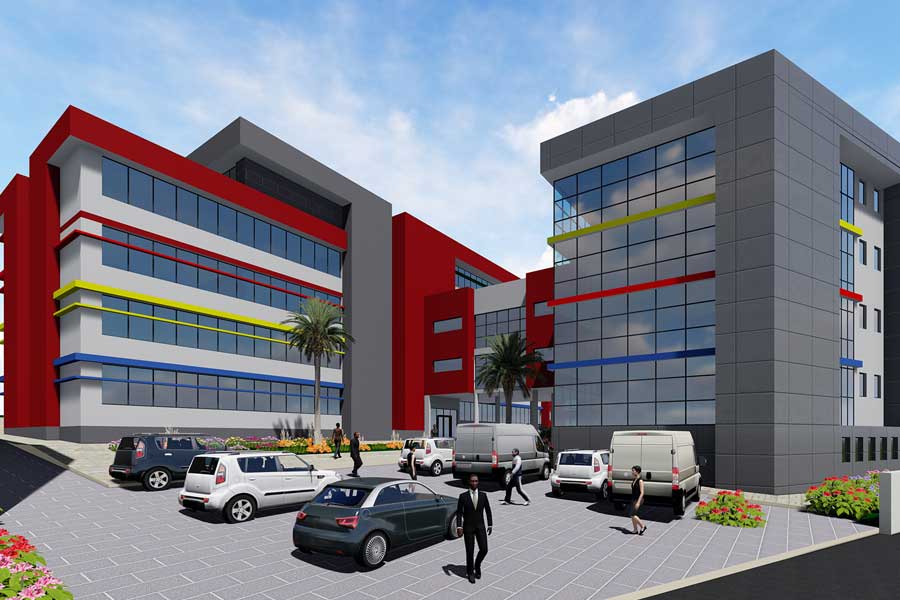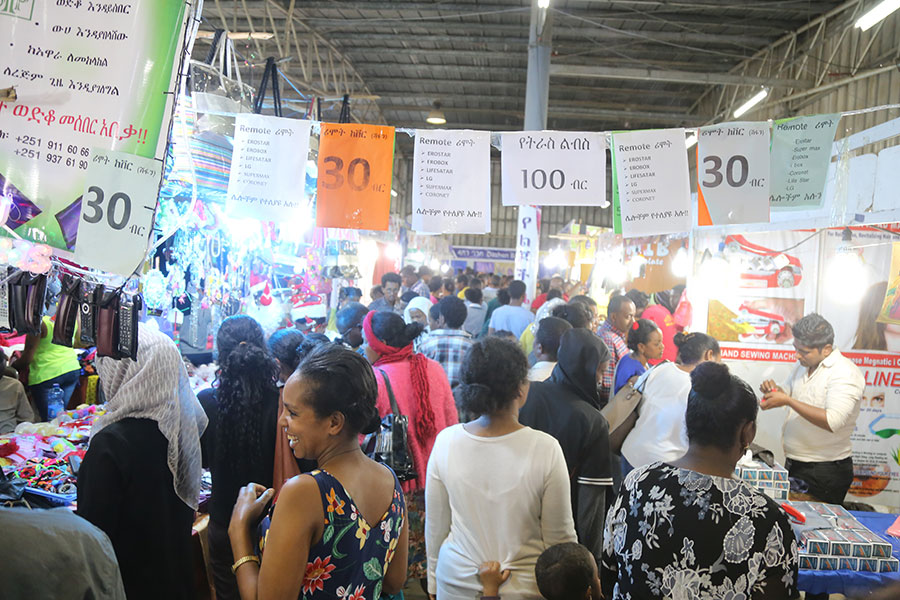
Nov 2 , 2024.
Addis Abeba, fondly dubbed a 'New Flower,' is wilting under the weight of unchecked urban growth. While the capital's main thoroughfares gleam with new infrastructure — separate lanes for pedestrians, cyclists, and motorists — the city's growing air and noise pollution threatens to strangle its leaders' aspirations of becoming a modern and serene metropolis.
The driving culture is anything but commendable. Aggression and road rage dominate the streets, with many drivers flouting traffic regulations with impunity. Those behind the wheels of government vehicles, bearing military, police, or bureaucratic plates, often act as if they are above the law, mistaking non-compliance for a symbol of status. Traffic police officers, present but seemingly indifferent, rarely hold these offenders accountable. Ironically, when accidents occur, they are indiscriminate in their victims, cutting across class and privilege.
The lawlessness reigning on the roads contributes to a city that has become unbearably noisy. The relentless blare of horns, generated especially by the notorious Higer buses and Sino trucks, created a deafening environment. Despite regulations prohibiting unnecessary and unwarranted honking, particularly near schools and hospitals, drivers seem oblivious. A few minutes on the main roads exposes anyone to this auditory assault (noise pollution), which should be avoidable and unacceptable in a city whose officials often purport to enforce law and order.
Noise pollution, often overlooked, has reached a detrimental stage. The federal Environmental Protection Authority (EPA) developed a noise map with guidelines for a decibel cap ranging between 45 decibels in residential areas after daybreak and 75 decibels in industrial zones. A survey by the Authority identified Bole District, particularly around the Atlas area, as the most noise-polluted neighbourhood. Complaints also come from the Qirqos and Nifas Silk districts. Its officials attributed much of the problem to the proliferation of bars and grocery stores, citing a lack of proper master planning during the city's expansion.
Of the 1,205 individuals the Authority has taken measures against, 40pc were related to noise pollution. However, due to resource constraints, only 13pc of the 924 reported businesses faced action.
Researchers from Jimma University evaluated noise pollution in educational institutions in Addis Ketema District. Their findings are startling.
Noise assessments conducted during school hours showed that in almost all measurement points, noise values exceeded 55 decibels, the limit according to WHO standards for educational environments. The main sources were transportation noise from bus stations, taxis, and minibuses, as well as loud advertisements and music from commercial outlets.
Traffic congestion exacerbates both air and noise pollution. In a typical 12-hour span, over 16,000 vehicles clog the Urael-Atlas segment, stalling drivers in idle queues that stretch longer each day. Commuters endure delays amounting to 212-vehicle-hour at the city's busiest intersections, translating into wasted time, squandering productivity, mounting fuel costs, and, worst of all, noise pollution at levels detrimental to public health.
Decibel levels at intersections like Hayahulet and Urael routinely reach 90-100 decibels. For context, prolonged exposure to anything above 85 decibels can induce permanent hearing damage. The constant roar should be more than a nuisance for the city's street vendors, shop owners, and the unlucky residents living along these main roads. It is a daily health hazard linked to increased risks of cardiovascular disease, stress, and sleep disturbances.
Data from the Ministry of Transport revealed vehicle registrations increase by approximately six percent annually, with around 70pc of the over a million registered vehicles concentrated in Addis Abeba. Despite remarkable changes over the past year due to the corridor development projects, the city still lacks sufficient off-street parking, leading to cars spilling into already congested lanes and transforming sidewalks into impromptu parking spaces. Traffic management is in a sorry state, and mass transit options, while nominally available, are often inadequate, pushing more commuters onto the roads.
Commuters crawl at speeds below five kilometres an hour, particularly during the dreaded evening peak.
The sources of pollution, not limited to noise, are predictable yet stubbornly persistent. Over 55pc of residents rely on open burning for waste disposal, while 91pc depend on public transportation composed of ageing diesel buses notorious for heavy emissions. Diesel vehicles release not only CO2 but also black carbon, a potent climate pollutant. Black smog belches from vehicles, clouding the skies and making breathing difficult. Efforts to shift to cleaner transportation modes, such as expanding the light rail system, have been all but successful, heightening logistical and financial constraints.
Air pollution compounds the city's anguish.
Rapid expansion in construction and manufacturing, fuelled by the country's development ambitions, exacerbated the air quality crisis. Construction dust, cement factories, and unregulated small-scale industries emit a cocktail of harmful pollutants, including sulphur dioxide and nitrogen oxides. Cement production alone, which has surged to meet the infrastructure demands of an expanding city, contributes to particulate matter and greenhouse gas emissions.
According to Ethiopia's first Air Quality Management Plan (AQMP), launched three years ago by the city administration, the concentration of PM2.5 (fine particulate matter capable of penetrating deep into the lungs) often reaches levels two to three times higher than World Health Organisation (WHO) recommended standards. The plan should have brought alarm, pressing unchecked urban pollution's severe and wide-reaching impacts.
The plan attributed 2,700 premature deaths in 2017 to air pollution alone. If current trends continue, researchers warn that this figure could swell to 6,000 deaths by next year, making air pollution a leading cause of non-accidental deaths among adults aged 25 to 99. Six years ago, 21pc of non-accidental deaths in this age bracket were linked to air pollution; by 2025, this share is expected to rise to 32pc. The warning cannot be any more explicit and troubling.
The economic implications are equally severe. Air pollution reduces productivity through increased sick days, hospital visits, and class absenteeism among children. Residents suffer from asthma, chronic respiratory conditions, and other pollution-related health issues, straining the city's healthcare system and its economy. Lost workdays and medical expenses erode the productivity gains Addis Abeba's growth aspires to achieve.
Legislative, policy and enforcement interventions seem possible yet remain elusive. The air quality plan outlines several objectives, including tighter vehicle emissions standards, incentives to modernise the ageing vehicle fleet, stricter regulations on open burning, and expanded air quality monitoring networks. Partnerships with international organisations such as the U.S. Environmental Protection Agency have initiated the deployment of low-cost air sensors to gather real-time data.
Plans to introduce congestion charges, enforce parking regulations, and develop vertical parking facilities have been floated but not realised. Without a sense of urgency from policymakers, the situation worsens as Addis Abeba continues its trajectory toward becoming a megacity. Yet, policymakers and the city officials responsible for enforcing law and order seem to have lost sight of the necessity of environmental stewardship for sustainable development. They have chosen to ignore the growing cloud hanging over residents. Every idle hour, every revved engine, every horn blast emphasises the urgent need for intervention.
Addis Abeba deserves better than to be held hostage by its own growth. Controlling air quality and keeping noise in check should be a critical first step. Enforcing rules and regulations indiscriminately with vigour and urgency will determine if the 'New Flower' can blossom or continue to wither under the weight of its expansion.
PUBLISHED ON
Nov 02,2024 [ VOL
25 , NO
1279]

News Analysis | Nov 03,2024

Radar | Oct 09,2021

Viewpoints | Apr 22,2023

Fortune News | Nov 16,2019

Radar | Nov 02,2019

Featured | Sep 09,2024

Featured | Jan 05,2019

Fortune News | Mar 09,2019

Featured | Apr 19,2025

Viewpoints | Jan 13,2024

My Opinion | 131673 Views | Aug 14,2021

My Opinion | 128039 Views | Aug 21,2021

My Opinion | 126001 Views | Sep 10,2021

My Opinion | 123622 Views | Aug 07,2021

Dec 22 , 2024 . By TIZITA SHEWAFERAW
Charged with transforming colossal state-owned enterprises into modern and competitiv...

Aug 18 , 2024 . By AKSAH ITALO
Although predictable Yonas Zerihun's job in the ride-hailing service is not immune to...

Jul 28 , 2024 . By TIZITA SHEWAFERAW
Unhabitual, perhaps too many, Samuel Gebreyohannes, 38, used to occasionally enjoy a couple of beers at breakfast. However, he recently swit...

Jul 13 , 2024 . By AKSAH ITALO
Investors who rely on tractors, trucks, and field vehicles for commuting, transporting commodities, and f...

Jun 29 , 2025
Addis Abeba's first rains have coincided with a sweeping rise in private school tuition, prompting the city's education...

Jun 29 , 2025 . By BEZAWIT HULUAGER
Central Bank Governor Mamo Mihretu claimed a bold reconfiguration of monetary policy...

Jun 29 , 2025 . By BEZAWIT HULUAGER
The federal government is betting on a sweeping overhaul of the driver licensing regi...

Jun 29 , 2025 . By NAHOM AYELE
Gadaa Bank has listed 1.2 million shares on the Ethiopian Securities Exchange (ESX),...